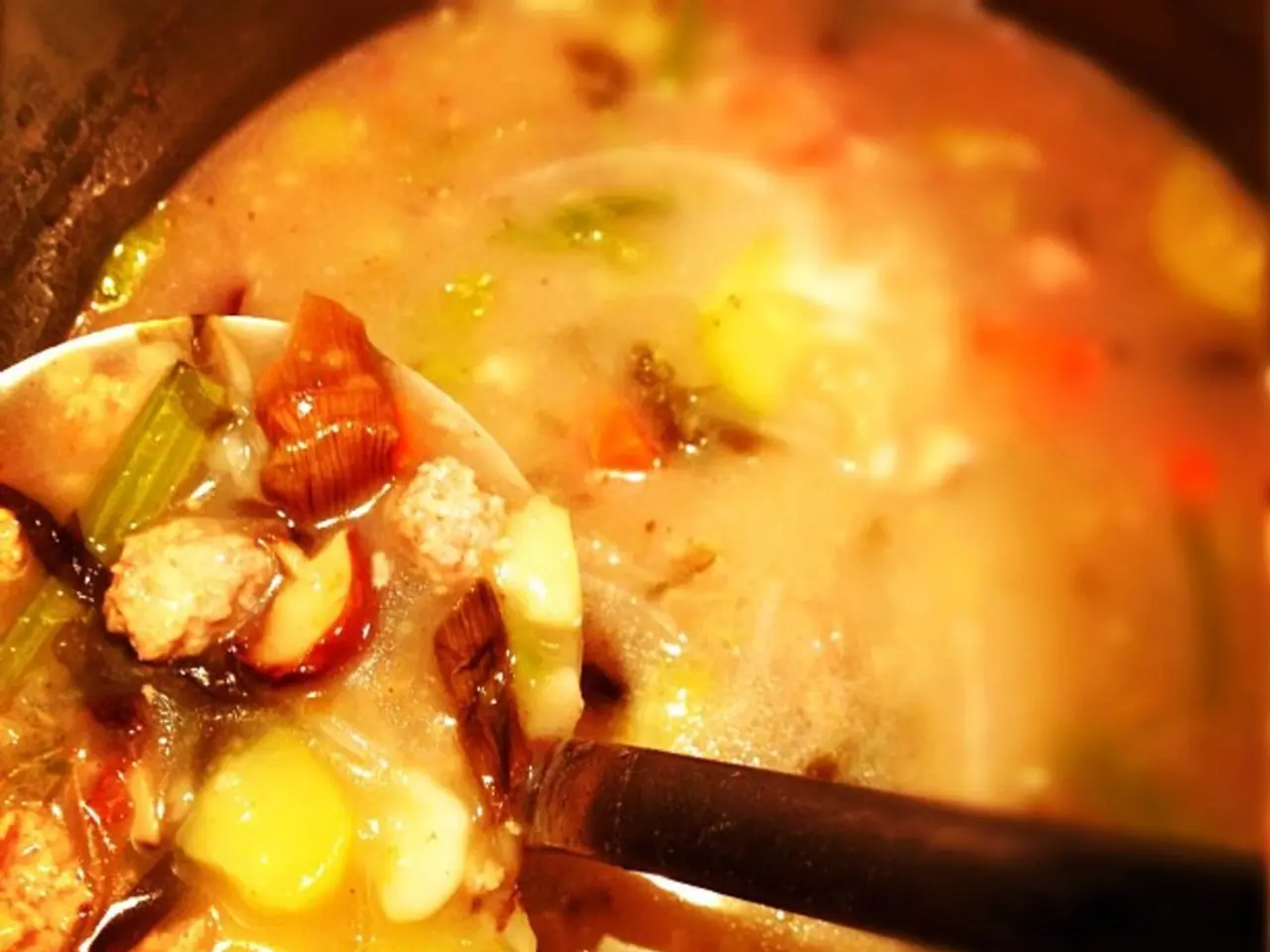British Dining Enhanced with Indian Flavors: A Tasteful Combination
In the rich tapestry of British culinary history, the impact of Indian spices is undeniable. This fusion of flavours, which began centuries ago, has resulted in a unique blend of traditional Indian dishes and modern British cooking.
A Culinary Revolution
The introduction of curry to British homes can be traced back to the 18th and 19th centuries, thanks to the influx of Indian cookbooks. The term "curry," derived from the Tamil word "kari," refers to a wide range of Indian sauces and dishes. Over time, the British adapted these recipes to suit their palates, creating milder and sweeter versions, often using pre-made curry powders.
This culinary revolution led to the popularization of dishes like Chicken Tikka Masala, Vindaloo, and various curries. These dishes, now staples in British restaurants, are often adapted to suit local tastes.
Spicing Up British Cooking
Indian spices like coriander, cumin, turmeric, and cinnamon have become staples in both traditional and modern British recipes. These spices add depth and warmth to dishes, reflecting the British appreciation for Indian culinary traditions. Cumin, for instance, is a warm and earthy spice used in roast vegetables, stews, and curries, while turmeric, with its vibrant yellow hue, is commonly found in fusion sauces, rice, and soups.
A Symphony of Flavours
The blending of Indian spices with British cuisine produces dishes that feel both familiar and fresh, honouring tradition while trying new things. Indian spices add richness to even the most basic foods, enhancing their flavour complexity. For example, chilli powder provides depth and heat, becoming commonplace in British households and stores, while garam masala, a mixture of black pepper, cloves, cardamom, and cinnamon, is used in soups, sauces, and marinades.
A Cultural Exchange
The influence of Indian spices on British cuisine reflects the broader cultural exchange between the two nations. This exchange has fostered a vibrant multicultural culinary scene in Britain, especially in cities with diverse populations. Restaurants like Paro Indian Covent Garden, located in the heart of London's theatrical area, combine Indian customs with sophisticated British tables.
The popularity of Indian spices in Britain has also contributed to the success of British celebrity chefs who often incorporate global cuisines into their cooking. This has further boosted the visibility and appeal of Indian spices in British culture.
A Continuous Evolution
The adaptation of Indian spices into British recipes represents a broader cultural trend of innovation and adaptation. This process has enriched British cuisine while also reflecting the evolving nature of cultural exchange between the UK and India. Supermarkets now stock Indian spices, frozen samosas, spice blends, and premade curry pastes, making it easier than ever for home cooks to experiment with these flavours.
In conclusion, Indian spices have not only added flavour to British cuisine but have also played a significant role in shaping British cultural identity and culinary traditions. From the bustling streets of Bradford and Birmingham to the cosmopolitan heart of London, the influence of Indian spices continues to be felt, adding a spicy kick to the British palate and enriching the nation's culinary landscape.
- In British homes, Indian spices like coriander, cumin, turmeric, and cinnamon have become essential ingredients in both traditional and modern recipes.
- Indian restaurants, such as Paro Indian Covent Garden in London, showcase a blend of Indian customs and sophisticated British dining, illustrating the cultural exchange between the two nations.
- British celebrity chefs, like Jamie Oliver and Gordon Ramsay, often incorporate global cuisines, particularly Indian dishes and spices, into their cooking, boosting their popularity and visibility.
- Modern trends in cooking and fusion cuisine have led to the availability of Indian spices, frozen samosas, spice blends, and premade curry pastes in British supermarkets, making it easier for home cooks to experiment with these flavors.




